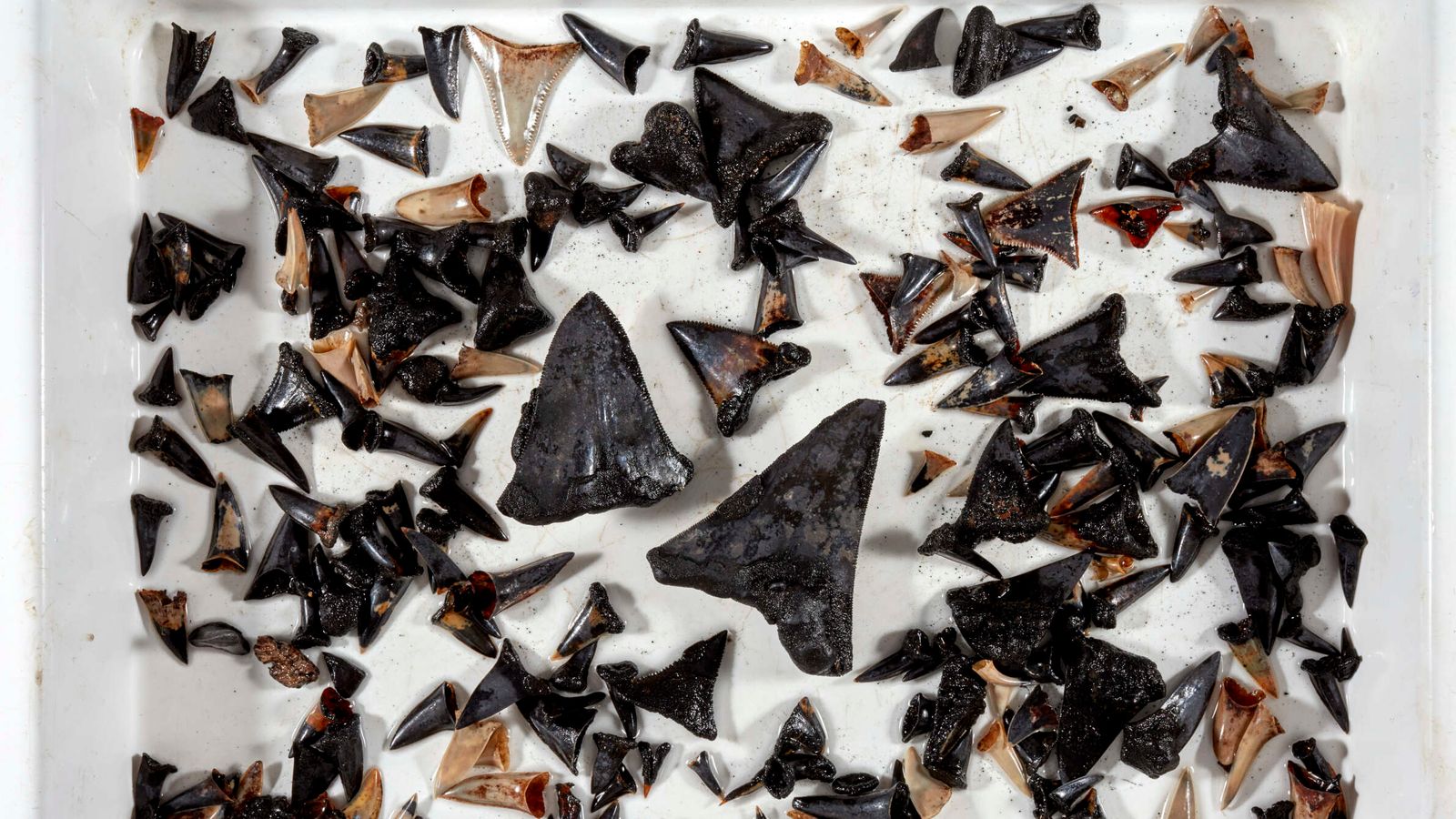A shark graveyard containing hundreds of teeth has been discovered by scientists deep under the sea.
More than three miles beneath the surface of the Indian Ocean lies a fascinating collection of shark remains, including fossils from a close relative of the infamous (and huge) megalodon.
Dr Glenn Moore, curator of fishes at the Western Australian Museum, said the fossils came from an interesting mix of modern and ancient sharks.
He said: “The teeth look to come from modern sharks, such as mako and white sharks, but also from ancient sharks including the immediate ancestor of the giant megalodon shark.
“This shark evolved into the megalodon, which was the largest of all sharks but died out about 3.5 million years ago.”
The megalodon was considered one of most powerful predators ever to have lived – and has become well-known thanks to Hollywood – but it is only known from fragmentary remains, such as its teeth.
Its appearance and maximum size are still uncertain.
Shark attacks swimmer in waters near San Diego
Battle-scarred great white shark caught on video after incredible 1,100-mile journey
Shark attacks snorkeler in ‘very scary’ incident off British coast – but victim able to walk away
The teeth found in the shark graveyard are thought to be from its closest relative, a shark which itself grew to more than 12 metres long.
The discovery was made by scientists aboard a research vessel operated by CSIRO – Australia’s national science agency – during biodiversity surveys in two of Australia’s newest marine parks.
Dr Moore said that it was astounding that such a large number of teeth were collected from a relatively small area on the seafloor.
“We’ve also found a few mako and white shark teeth during the underway voyage but nothing like the numbers found during the previous voyage,” he said.
Read more:
Battle-scarred shark’s incredible 1,100-mile journey
‘Very rare’ baby ghost shark discovered off New Zealand
“It’s incredible to think we’ve collected all these teeth in a net from the seafloor some 4 to 5 km below the ocean surface.”
The discoveries emphasise the importance of marine biodiversity survey voyages and the significant contribution they make to better understanding the life in our oceans.
“From small, new, bottom-dwelling sharks, to massive ancient mega-sharks that once roamed the oceans, these biodiversity surveys give us vital insights into the life in our oceans,” Dr John Keesing from CSIRO said.








